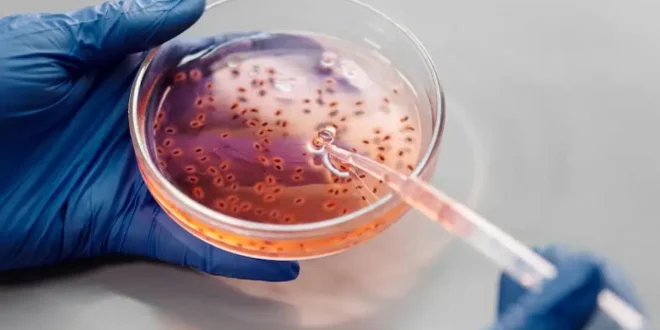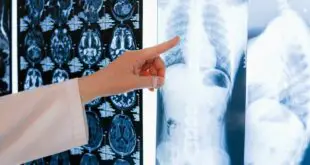Have you ever wondered, “Where is the most bacteria found in the human body?” The human body is a marvelous place that interests so many individuals.
Its ability to live with other microorganisms is one of the many things that mortals find fascinating about it.
Bacteria exist in many parts of the human body, and it enters our bodies from the time we are born and live in our bodies throughout our lifetime.
Today, we will deeply look at the places bacteria reside within our bodies and unearth their remarkable role in shaping our existence.
Where Is The Most Bacteria Found In The Human Body?
The largest bacteria concentration in the human body exists in the human digestion tract, especially in the large intestines. The colon offers favorable conditions such as warmth, moisture, and nutrients from undigested food for bacterial growth.
The bacterial population in the colon plays a crucial role in the absorption of mineral salts and the synthesis of specific vitamins. Note that though the large intestine has the highest population of bacteria, other body parts also have unique microbiota.
Bacteria In The Human Body
Bacteria are essential for the body’s normal functioning as they exist in a larger population than the body’s cells.
It resides in different body parts, including the skin, the gut, the mouth, and the urogenital tract. The significance of bacteria in these body parts includes:
1. The Gastrointestinal Tract
The gut is the bacterial haven in the body. Deep within our gastrointestinal tract is an ecosystem where bacteria thrive, influencing our overall health. Bacteria are high in population, especially in the colon, where undigested food heads.
The colon offers a warm and nutrient-rich habitat for the growth and survival of bacteria. Factors that contribute to the development of bacteria in the gut include:
- Diet; diet directly influences the type and abundance of bacteria that flourish in our gut. For instance, dietary fibers are an energy source for beneficial bacteria, promoting their growth and diversity.
- Presence Of Prebiotics: prebiotics promote the growth of beneficial bacteria such as Lactobacilli. You can find prebiotics in foods such as onions, garlic, and particular fruits.
- Genetics; every individual has a unique set of genes that can impact the composition of bacteria in the gut.
- Immune system; the immune system interacts with bacteria in the gut, shaping their composition and maintaining a delicate balance.
- Age; bacteria evolve throughout a person’s life, with notable changes occurring during infancy, adulthood, and old age.
Micro biota is vital to the normal functioning of the gut, and it’s essential for our overall health and well-being.
2. Skin
The skin is another part of the body where thousands of bacteria reside. While some bacteria on the skin can cause harm, some play a crucial role in maintaining skin health and protection.
The skin’s microbes include fungi, viruses, and other microorganisms. They exist in different skin regions, such as the face, arms, and feet.
Some environmental factors like humidity and personal hygiene exercises have a significant role in determining the existence of skin bacteria.
Bacteria on the skin serve as physical protection, inhibiting the growth of pathogens. They compete with potentially harmful microorganisms and prevent their reproduction by producing antimicrobial substances.
Skin bacteria are crucial in influencing the activation and regulation of the skin’s immune cells. An imbalance of skin bacteria can lead to acne, eczema, Psoriasis, and wound infections.
3. Mouth
Microbes also thrive in the human oral cavity, which is moist and constantly receives food. The microbiota within our mouth influences our dental health.
Oral micro-biota might consist of bacteria, fungi, and viruses that inhabit various mouth surfaces, including teeth and gum.
When one disrupts the balance of bacteria in the mouth, they can experience conditions such as gingivitis and dental carries.
Additionally, since the oral cavity is a gateway to the entire body, its bacteria can influence a person’s overall health.
4. Respiratory Tract
Our respiratory tract is also a home of bacteria that influence the health of our lungs. While lungs were long considered sterile, recent advancements in research have shown the existence of unique microbiota.
Bacteria in the respiratory tract help in defending the lungs against potential pathogens. Respiratory tract dysbiosis disrupts the bacterial balance required to maintain healthy lungs.
Respiratory tract dysbiosis can occur as a result of; chronic respiratory conditions, the use of antibiotics, or environmental conditions. A proper bacterial balance in the respiratory tract can lead to pneumonia and bronchitis.
Disrupting microbial communities can comprise the respiratory tract’s natural defense system leading to an increased susceptibility to infections. Nonetheless, the diversity of respiratory microbiota may impact the treatment outcomes of the disease.
5. Urogenital Tract
Deep in the intimate spaces of the urogenital tract, a diverse world of bacteria exists. Understanding why they reside in the urogenital tract unveils their profound impact on reproductive health.
Urogenital health is associated with the health of the vagina, fallopian tubes, and uterus in females and the penis and urethra in men. In women, vaginal bacteria is crucial for maintaining vaginal and reproductive health.
The diversity of vaginal bacteria influences its PH levels, causing the growth of helpful or harmful microorganisms.
Lactobacillus species are healthy vaginal bacteria that maintain a low PH creating an inhospitable environment for pathogens.
Healthy vaginal bacteria help prevent unwanted conditions like; yeast infections, bacterial vaginosis, and Urinary Tract Infections.
Similarly, penile bacteria are crucial for the maintenance of good genital health and the prevention of disorders.
Bacterial presence such as Corynebacterium helps maintain a healthy balance preventing the overgrowth of harmful microorganisms.
It is vital to understand the interplay of urogenital bacteria and common infections to promote healthier reproductive health.
How Can You Increase Good Bacteria In Your Gut
Good bacteria in the gut have numerous benefits to your health and mental well-being. Here are some of how you could increase and maintain good bacteria in your gut:
1. Eat Food Rich In Fiber
Foods rich in fiber are beneficial to bacteria in the gut and increase their chances of survival. Healthy bacteria will improve your immune function and reduce the chances of getting chronic diseases and inflammation.
Providing healthy bacteria with fiber-rich diets will improve your mood, making you happy all day.
2. Incorporate Pre-biotic Rich Foods In Your Diet
Healthy bacteria feed on pre-biotic foods for survival. Therefore, incorporating pre-biotic-rich food into your diet will increase the population of beneficial bacteria in the stomach. Some sources of prebiotics include; onions, garlic, spinach, oats, and whole wheat.
3. Reduce Animal Products
Animal products such as fried foods, high-fat dairy products, and red meat hinder the growth of healthy bacteria in the gut. Additionally, they influence the thriving of unhealthy bacteria linked to many infections.
Therefore, having a moderate consumption of animal products can be good for the growth of healthy bacteria.
4. Avoid Fatty Food
Avoid eating fatty foods or even cooking with a lot of oil. Food with too much oil promotes the growth of healthy bacteria, which might lead to stomach upsets after consumption. You could choose to eat plant-based foods that are naturally low in fat.
5. Avoid Antibiotics
Overconsumption of antibiotics kills healthy bacteria in the gut. Antibiotics can also come from animal food, as the US Food and Drug Administration estimates that farmers use over 80% of antibiotics in animal agriculture.
6. Incorporate Healthy Practices In Your Lifestyle
Healthy practices such as working out, getting enough sleep, and mindful meditation all positively impact your gut bacteria.
A large population of beneficial bacteria in your body will improve your immune and boost your mental health.
Can Good Bacteria (Probiotics) Be Harmful?
Scientists have conducted much research indicating that probiotics are safe for use, especially in healthy individuals. There is little evidence that good bacteria can harm a healthy person.
However, people with severe illness or compromised immune systems might suffer from good bacteria.
As healthy bacteria try to compete with harmful ones, it uses energy in the body, which might cause problems for people with weakened immune.
Nonetheless, consuming excess foods with healthy bacteria in the body can lead to the overgrowth of bacteria. Bacterial overgrowth is likely to affect the gut leading to digestive problems, which might affect your overall mood.
Some harmful effects of healthy bacteria could include infections and the production of toxic substances.
Some bacteria, such as Escherichia Coli, are generally harmless but can cause severe infection when they acquire genes that allow them to produce toxins.
Therefore, it is crucial to maintain a good balance of healthy bacteria in the body to prevent severe conditions.
Conclusion
The question, “Where is the most bacteria found in the human body?” opens up a new world of microbes.
The human body is full of bacteria, with the colon having the largest population. The colon has the most bacteria since it provides favorable conditions for bacteria to thrive.
Healthy bacteria in the body will help kill pathogens, improving your health. Healthy bacteria in the gut interact with other body parts, such as the brain, enhancing its functionality. Therefore, increasing beneficial bacteria in your gut will boost your immune and mental health.
So, why don’t you start incorporating healthy practices in your life today to promote the growth of healthy bacteria?
 Being Human
Being Human





